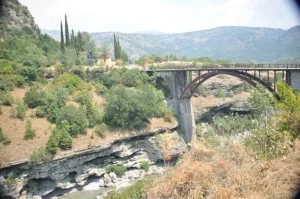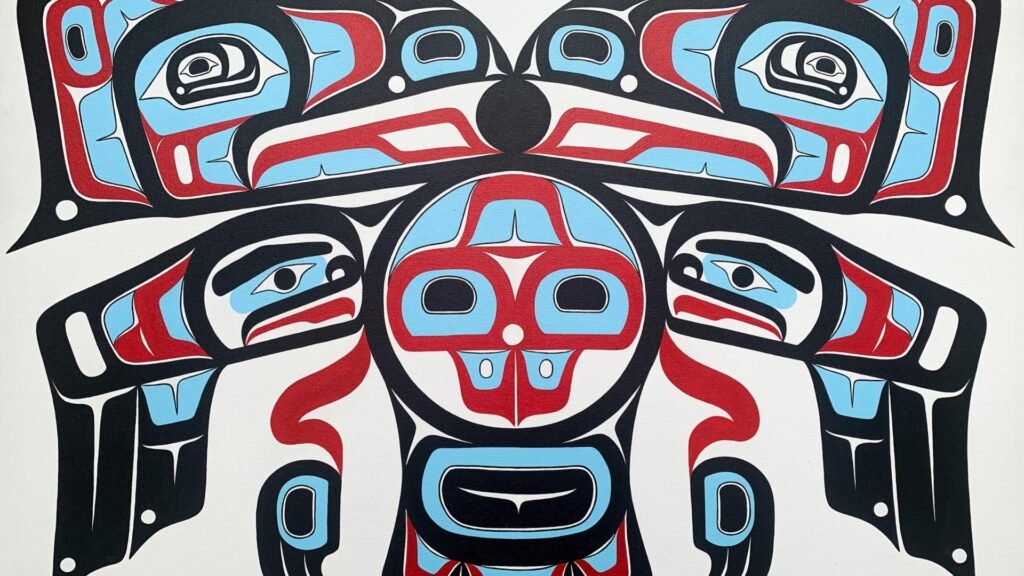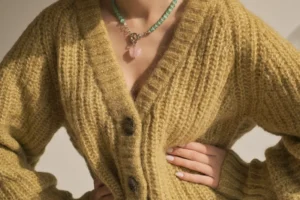Alaska Native art vibrantly illustrates the state’s rich cultural legacy. Every item narrates a tale of spiritual beliefs, long-standing customs, and a close bond with the natural world. This article explores the many Alaska Native art styles, their cultural relevance, and how they are still inspiring and evolving today.
The Roots of Alaska Native Art
Historical Background
Alaskan native art comes from the many indigenous communities that have called the state home for thousands of years. These peoples, such as the Tlingit, Haida, Yup’ik, Inupiaq, and many more, have unique creative traditions and ways of life.
Spiritual and Cultural Significance
Life and spirituality were and still are intricately entwined with art. In addition to being works of art, totem poles, masks, and ceremonial regalia have more profound cultural and spiritual significance. These relics frequently signify clan lineage, narrate ancestor stories, and impart moral teachings.
Diverse Forms of Alaska Native Art
Totem Poles
The totem pole is among the most well-known examples of Alaska Native art. These enormous wooden constructions, which feature human characters, animals, and otherworldly creatures, are painstakingly carved and painted. Every totem pole has a narrative as a history document and a communal identification symbol.
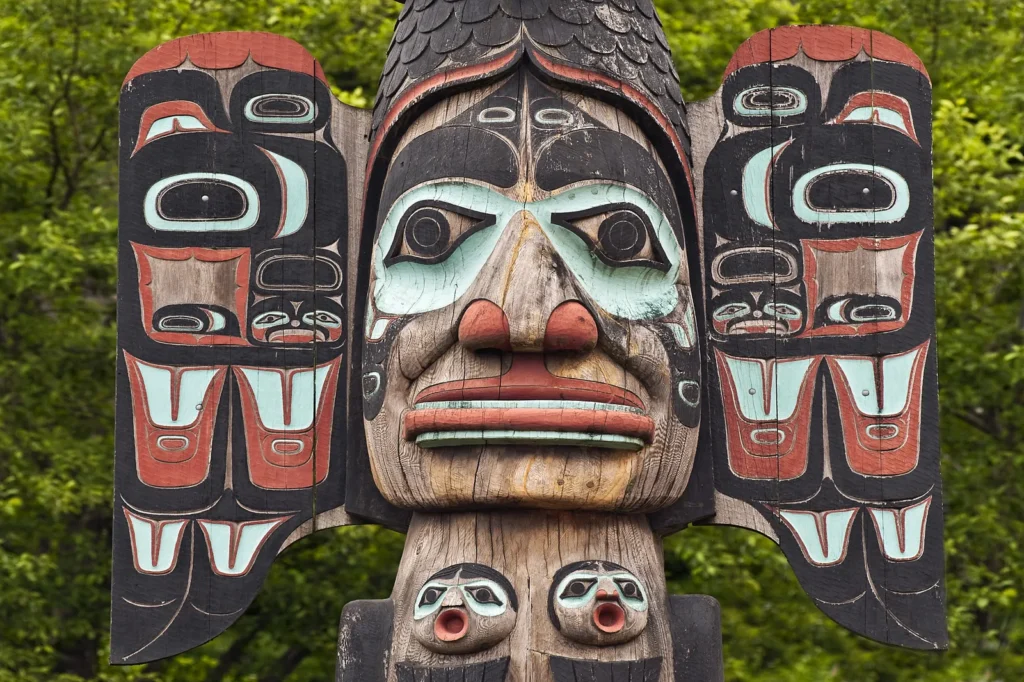
Masks
In Alaska Native ceremonies and storytelling, masks are essential. They are made of wood and embellished with fur, feathers, and other organic elements. These masks are frequently employed to symbolize spirits, animals, and legendary characters in dances and ceremonies, bringing the tales of antiquity to life.

Weaving and Basketry
Traditional crafts like weaving and basketry highlight the talent and imagination of Alaska Native artisans. Artists construct elaborate patterns and motifs using cedar bark, grasses, and spruce roots. These fabrics and baskets are both decorative and functional, frequently utilized in ceremonial settings in addition to daily life.
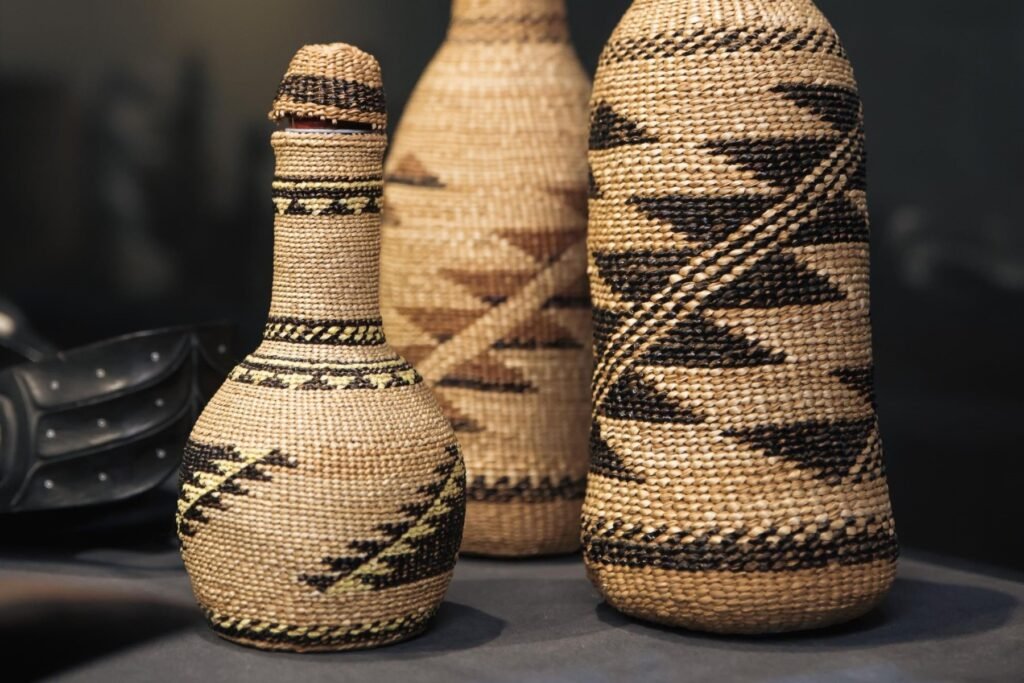
Ivory Carving
The Inupiaq and Yup’ik peoples hold ivory carving in high regard as a kind of art. Artists use whale bones and walrus tusks to create intricate miniatures representing animals, hunting scenes, and daily life. In addition to magnificent works of art, these carvings illustrate the intimate bond between the human race and its surroundings.
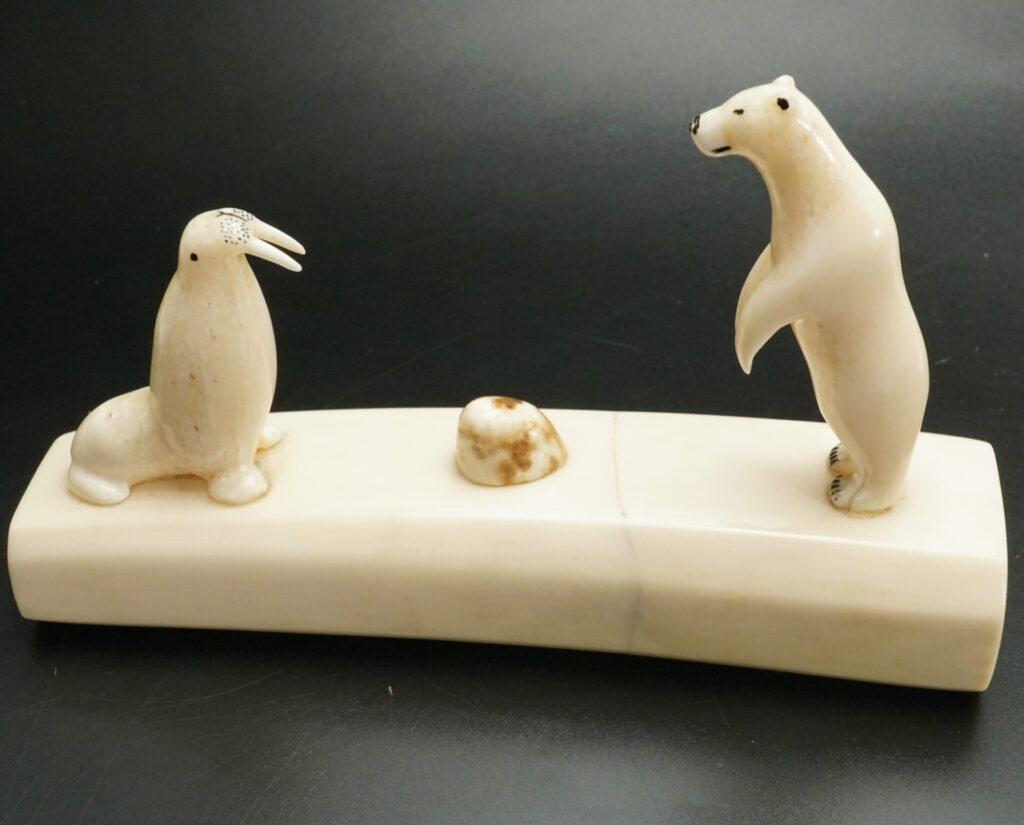
Contemporary Alaska Native Art
Evolution and Innovation
Alaska Native art is dynamic even though it has a solid historical foundation. Contemporary artists constantly evolve art forms by combining current elements with classic approaches. This confluence produces avant-garde works that respect ancestry while addressing contemporary social and political issues.
Prominent Contemporary Artists
Preston Singletary (Tlingit) and Sonya Kelliher-Combs (Inupiaq/Athabascan) are artists becoming more well-known for their work. Singletary is famous for his glass work, which features Tlingit patterns and motifs, and Kelliher-Combs uses mixed media to explore identity and location-related themes.
Art Markets and Galleries
Alaska Native art can be found in galleries and museums worldwide. Artists display their work, interact with audiences, and maintain their cultural traditions through events like the Alaska Native Art Market and shows at the Anchorage Museum.
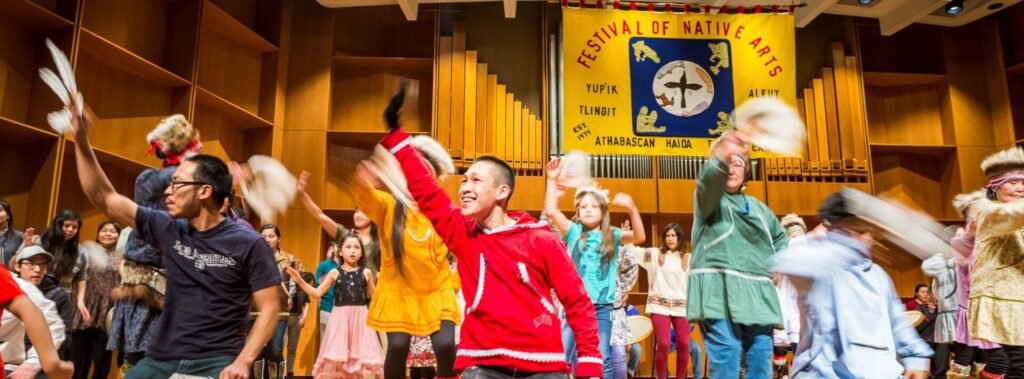
The Cultural Renaissance
Revitalizing Traditions
The desire to protect and revive cultural practices has renewed interest in Alaska Native traditions. Programs for art education, artistic workshops, and community gatherings that inspire the next generation to discover and preserve their creative history are examples of this renaissance.
Global Impact
Alaska Native art has a worldwide impact and enhances local communities. It promotes more tolerance and understanding by encouraging viewers to see the beauty and complexity of indigenous cultures. Through partnerships, internet platforms, and exhibits, Alaska Native art’s influence and audience are growing.
Conclusion
The vibrant and timeless essence of Alaska’s indigenous traditions may be seen in Native art. Every object, whether a modern glass sculpture or an antiquated totem pole, bears witness to a bright future and a rich past. This art form is still a potent tool for storytelling, cultural preservation, and artistic innovation, even as it develops further. Discovering the world of Alaska Native art is a rewarding experience that provides a deep understanding of the human condition and our relationship to the natural environment, regardless of your interest in art or cultural exploration.



